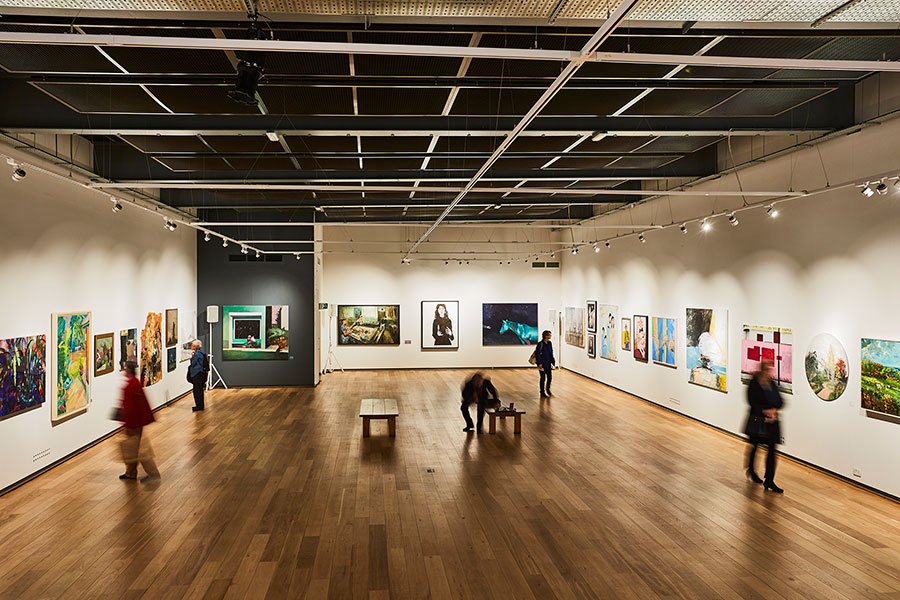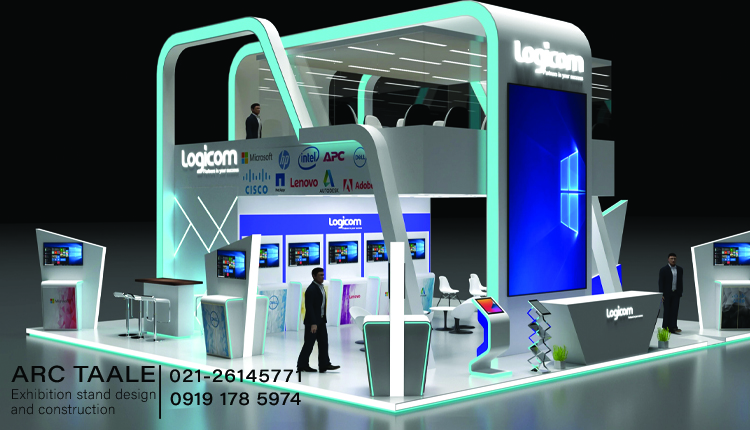An art exhibition is an event or showcase where works of art are displayed for public viewing. These exhibitions can take place in various venues such as art galleries, museums, cultural centers, or even outdoor spaces. The purpose of an art exhibition is to present and share artworks with the public, allowing artists to showcase their creativity, express ideas, evoke emotions, and provoke thought.
Art exhibitions can feature various forms of visual art, including paintings, sculptures, photographs, installations, mixed media, and digital art. They may focus on a specific theme, artistic movement, historical period, or individual artist’s body of work. Art exhibitions often attract art enthusiasts, collectors, critics, and members of the public who are interested in experiencing and engaging with art firsthand.
What is an art exhibition?
An art exhibition is an immersive and curated display of artistic works, a captivating kaleidoscope that brings together the visions, expressions, and narratives of diverse creators. It is a celebration of creativity, a symphony of colors, forms, and ideas converging in a space designed to evoke emotions, provoke thoughts, and inspire awe.
Captivating the Senses
Walking through the doors of an art exhibition is akin to entering a realm where every brushstroke, sculpted curve, and photographic frame is a portal into the artist’s soul. The air is charged with creativity, as the walls breathe life into each masterpiece, creating an atmosphere that transcends the mundane and ushers the spectator into the extraordinary.
Curatorial Mastery
Curators, the unsung architects of the exhibition, play a pivotal role in orchestrating a seamless dialogue between artworks. They carefully arrange pieces, considering not only visual aesthetics but also thematic connections, guiding the audience on a journey of discovery. Their expertise transforms the exhibition space into a cohesive narrative, transforming it into a living, breathing entity.
Diversity in Expression
An art exhibition is a melting pot of artistic styles, genres, and mediums. Paintings, sculptures, installations, and digital art coexist, fostering a rich environment where traditional meets contemporary, and the avant-garde dances with the classic. This diversity ensures that every visitor finds resonance with at least one piece, fostering a connection that transcends individual tastes.
Interaction and Engagement
Art exhibitions are not passive experiences; they invite active participation. Attendees are encouraged to explore, question, and interpret. Interactive installations, workshops, and guided tours create a dynamic space where the audience becomes an integral part of the artistic conversation, forging a connection that goes beyond the visual.
How to design an attractive booth in an art exhibition?
Designing an attractive booth in an art exhibition is an art form in itself – a delicate balance between aesthetic allure and strategic functionality. A well-crafted booth not only showcases your artwork but also beckons visitors into a curated experience. From layout and lighting to color schemes and interactive elements, every detail contributes to the booth’s success in leaving a lasting impression.
read more
Strategic Layout
The layout is the foundation of an enticing booth. Consider the flow of foot traffic, ensuring that visitors can navigate the space seamlessly. Create designated areas for specific themes or art forms, providing a visual journey that captures attention from the moment someone steps in.
Eye-Catching Displays
Make your artwork the star by presenting it in a way that captivates the viewer. Utilize various display methods, such as well-lit walls, pedestals, or hanging installations, to add dimension and intrigue. Group pieces strategically, creating thematic clusters that tell a cohesive story and invite deeper exploration.
Lighting Magic
Proper lighting can transform a booth into a captivating spectacle. Use a combination of ambient, accent, and spotlighting to highlight specific artworks and create a dynamic atmosphere. Thoughtful lighting not only enhances visibility but also adds a dramatic flair, elevating the overall aesthetic appeal.
Color Harmony
Selecting a harmonious color palette is crucial for creating a visually appealing booth. Consider the mood you want to evoke and choose colors that complement your artwork. Consistency in color schemes across displays fosters a cohesive and polished look, leaving a lasting visual imprint.
Interactive Elements
Engage visitors on a deeper level by incorporating interactive elements. Whether it’s a digital display, a live demonstration, or a hands-on activity, interactive features create a memorable experience and encourage a connection between the audience and the artwork.
Branding and Signage
Ensure that your booth is easily identifiable by incorporating consistent branding elements. Clear signage with your name, logo, and a brief description of your artistic vision helps visitors connect with your identity. Consider using cohesive graphic design to tie everything together.
Comfortable Seating and Lounge Area
Provide a comfortable oasis within your booth for visitors to linger, absorb the art, and engage in conversations. Thoughtfully placed seating, perhaps accompanied by literature about your artistic process, creates an inviting space for dialogue and reflection.
Benefits of participating in art exhibition
Participating in an art exhibition is not merely an opportunity to showcase one’s creations; it is a transformative experience that transcends the studio walls. This immersive engagement with the art world offers a multitude of benefits, ranging from exposure and networking to personal and professional growth.
Exposure Beyond Boundaries
Art exhibitions serve as dynamic platforms for artists to present their work to a broader audience. Beyond the confines of personal studios, creations are thrust into the limelight, reaching eyes that may never have encountered them otherwise.
Networking and Collaboration
Art exhibitions are bustling hubs where artists, collectors, curators, and enthusiasts converge. Participating provides a unique opportunity to forge meaningful connections, fostering collaborations that can transcend the boundaries of the exhibition space.
Validation and Recognition
Being part of an art exhibition is a validation of an artist’s work. The act of curators selecting pieces for display is an acknowledgment of the artist’s skill, vision, and contribution to the artistic discourse. The recognition gained in these spaces can be a significant confidence booster.
Market Presence and Sales Opportunities
For artists looking to monetize their creations, art exhibitions offer a direct avenue to potential buyers and art enthusiasts. The exposure gained often translates into increased market presence, opening doors to sales opportunities that may not have been possible through other channels.
Educational Exchange and Feedback
Participating in art exhibitions encourages a dialogue between the artist and the audience. Visitors offer diverse perspectives, and this exchange of ideas can be invaluable for personal and artistic growth. Constructive feedback becomes a catalyst for refinement and evolution.
Professional Development
The process of preparing for an art exhibition, from conceptualizing the display to navigating the logistics, contributes significantly to an artist’s professional development. It hones organizational skills, project management, and the ability to present a cohesive artistic narrative.
Cultural and Social Impact
Art exhibitions are not just about individual artists; they contribute to the cultural and social fabric. By participating, artists become contributors to the collective narrative, adding their brushstrokes to the broader canvas of cultural expression.
Participating in an art exhibition is a multifaceted journey, an exploration that extends beyond the canvas. It is an investment in one’s artistic identity, a plunge into the currents of the art world that can yield not only recognition but also personal and professional enrichment.


